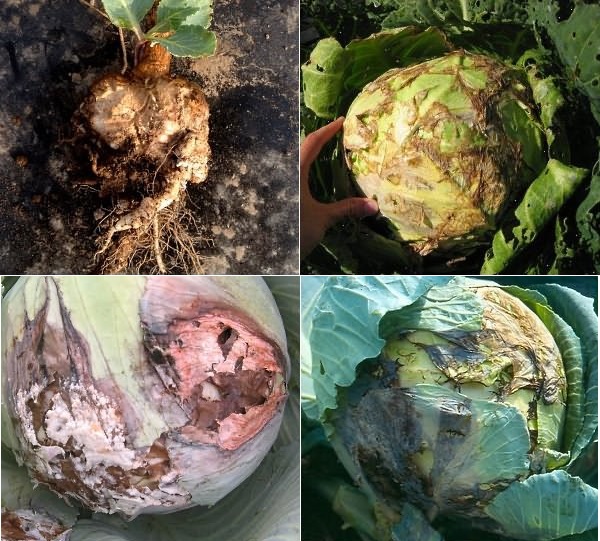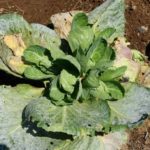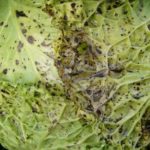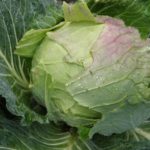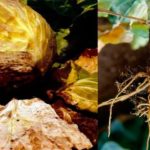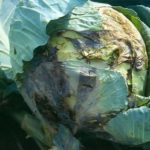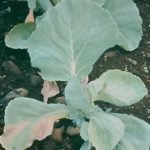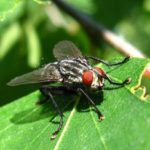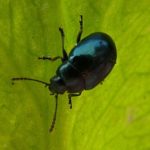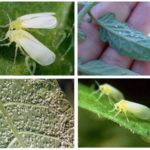Agricultural cabbage is not much different from the rules of growing other vegetable crops, but getting a good crop of heads with healthy leaves is very difficult. The plant is literally attacked by various pests and diseases, including such as: kila, powdery mildew, late blight, peronosporosis, and many others, due to its moisture and thermophilia. How to deal with them to protect the plant from death and grow a good harvest, you will learn from the article.
Table of contents
The most common diseases of cabbage
The article will deal with diseases that affect cabbage beds. After reviewing the characteristic signs and methods of treatment, the gardener can, if necessary, quickly locate the problem and prevent the virus or infection from spreading to other plants. Each disease is dangerous in its own way, so you should not delay with the treatment. Otherwise, you can not only receive less harvest, but also completely lose it.
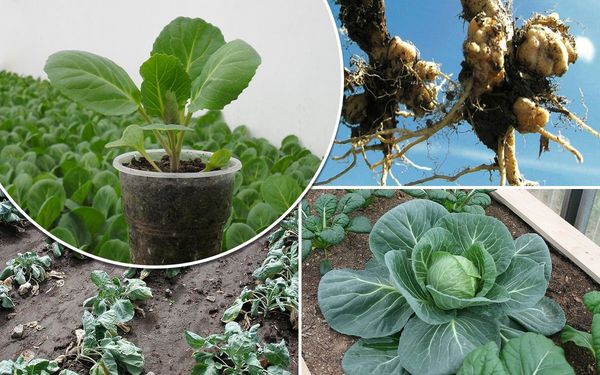
Kila cabbage what to do to protect the plant
The disease is also known as root cancer. The first signs of the disease appear on fading leaves that become yellowish. But the biggest changes occur in the root system, which is found only after digging out a bush. Growths are formed on the cobbles, and the impression is externally created about the swelling of the roots. The danger of the keel is incurability and it will not be possible to save the affected plant, it should be removed from the bed and disposed of, and the soil should be treated with Bordeaux disinfection liquid.
The cause of the development of root cancer is a fungus that actively develops in a humid environment. Cabbage needs moisture, but watering rates should be carefully monitored to prevent stagnant water in the soil.
As a preventive measure, it is necessary to enrich the soil with calcium-containing fertilizers, colloidal sulfur, and wood ash.
Prevention of Alternaria
The disease affects the seedlings and the adult culture, manifested in the form of necrotic strips and black-colored spots that can appear on cotyledons and subfamily knees. On the formed head, the spots densely cover the outer leaves, on which it is possible to detect black soot,indicative of fungus sporulation.
When detecting Alternaria, colloidal sulfur and other sulfur and copper-containing agents are used. As a preventive measure, the rules of crop rotation are observed, the seeds are disinfected before planting with planriz, TMTD.
- Mealy Dew Cabbage
- Alternaria on the head
- White rust
White rust
High humidity and low temperature index can provoke the development of the disease. When mushrooms mature, a white powder appears on the outer leaves of the cabbage. At revealing it is necessary to carry out spraying by the preparation Ridomil Gold.
What to process against powdery mildew
Recognize the disease can be on a white plaque on the leaves of cabbage, which eventually becomes light brown. Affected foliage deforms and dries. An infected plant is lagging behind. Some types of cabbage may deteriorate the taste (for example, Beijing and white).
In order to prevent the development of powdery mildew, all plant residues are carefully removed from the beds in the fall, and digging up of land is planned closer to frost so that harmful microorganisms will die. When cabbage is massively damaged, they are treated with special preparations: Bayleton, Quadris, Tilt, Topaz, Fundazim, Fundazol.
Perinosporosis
Another more well-known name for the disease is downy mildew. The causative agent, the parasitic fungus Peronospora brassicae Guum, enters the active phase of development in high humidity and warm weather. The disease can affect even seedlings. Characteristic features are gray and yellow spots on the leaves, whitish on the back side. Over time, the leaves completely dry and crumble. You can notice the problem also by the weak development of the shoot.
To protect the crop from death, it is necessary to treat the beds using special preparations: Ridomil Gold, Fitoftorin. At the initial stage of the development of downy powdery mildew, it is possible to spray the culture with Bordeaux liquid, repeating the procedure after 10 days.
- Heads affected by blight
- Cabbage Rhizoctoniosis
- Perinosporosis and its consequences
Drugs against rhizoctoniosis
It is possible to determine the disease by the rapid thinning of the root collar and darkening. Young shoots and adult plants are susceptible to infection. Even in the harvested crop, mushrooms continue to develop, which is manifested on breaking sheets and signs of rot.
If symptoms are detected, the fitolavin-300 should be sprayed on the bed. It is necessary to prepare the solution taking into account the vegetation period (the bigger it is, the higher the concentration of the product).
Late blight
The disease is characterized by rapid development, the affected areas on the stem quickly spread to the leaves. A characteristic sign - brown spots, rapidly increasing in size.
How to save seedlings from the black leg
Fungal disease caused by high soil moisture and poor air circulation. Manifested on the stem near the root zone in the form of blackening and thinning of the neck.At the start-up stage, the stem part of the bush completely decays, the focus of damage extends to the whole plant.
Before planting, seeds are treated with granozan (per 100 g. Seeds 0.4 g. Funds). The soil is also disinfected with a special preparation TMTD (50%) at the rate of 50 grams. on 1 m2.
If you find signs of black legs on cabbage seedlings, it is recommended to water the bushes with a weak solution of potassium permanganate (0.5 g of potassium permanganate per 1 l of water).
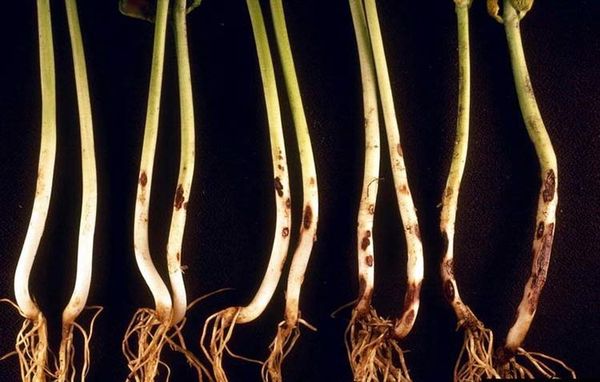
Leaf spots or fusarium wilt
A fairly common fungal disease that affects almost all cruciferous crops. Fusarium can be identified by the following criteria:
- yellow spots on the leaves, their drying and dying;
- small head of the head, which is formed with various deformations.
Initially, the plant becomes sluggish, the leaves turn pale noticeably.
- Mucous bacteriosis on cabbage
- Fusarium cabbage wilting
How to deal with bacteriosis
There are two types of bacteriosis: mucous and vascular. In the first case, the disease can occur in two variants, which differ in the initial zone of damage (decay begins from the stalk or from the leaves).
Signs of mucous bacteriosis:
- smell of rot;
- brown leaves appear on the surface of the leaves;
- primary signs can be found in the stalk.
The disease is transmitted from insects or through plant debris. The soil is not infected.
Vascular bacteriosis is recognized by the yellowing of the edges of the leaves, forming a black grid. Cabbage tastes change, shelf life is significantly reduced.
It is possible to prevent the development of bacteriosis by treating the seeds before planting TMTD, following the rules of agricultural engineering and crop rotation, and thoroughly cleaning the beds at the end of the season.
Insect pests of cabbage in open ground
Wet environment and the ability to hide between the sheets of the forming head attracts insects, including many pests. In just a few days, parasites can spoil the presentation of the crop, or even deprive it. To solve the problem will help timely prevention and quick processing.
How to get rid of cabbage flies
The pest outwardly practically does not differ from a usual fly. The danger is not the insect itself, but the larvae that the adults lay in warm soil. As food parasites choose young shoots, or rather their root system. The eaten shrub becomes stunted, easily removed from the soil due to the eaten up roots. Lower leaves change color to gray lead.
When a pest is detected, it is necessary to treat the beds with Tiofos or Chlorophos. Drugs are diluted with water to the concentration indicated on the label. When spraying it is necessary to comply with the standards of the working solution per plant.
- Cabbage Fly
- Cabbage fly larvae
- Leaf beetle babanuha close up
Fighting Babanukha
Very voracious leaf beetle, activated in early June. It is easy to recognize an insect - it is a black beetle with a green tint. His paws are brown. Overwinters in the soil along with plant debris.
Control measures:
- glue traps;
- manual collection of bugs;
- dusting the beds with wood ash;
- insecticide treatment.
How to save cabbage from whitefly
Recognizing an insect is simple - it is a small butterfly with white wings. The culture is eaten by both adults and larvae.
Control measures:
- glue traps;
- spraying garlic solution;
- processing infusion of dandelions;
- use of special preparations (Aktara, Fitoverm, Aktellik, Konfidor).
- Whitefish larvae
- Butterfly moth
- Whitefly on cabbage
Methods of dealing with the moth
In fact, the insect is a large moth. It is activated in the daytime when it lays eggs on cabbage leaves (up to 100 pieces at a time). After about a week and a half, caterpillars are obtained from eggs, which gnaw a vegetable in a matter of days.
Control measures:
- Cabbage treatment with calcium arsenate (1.2 g per 10 m2);
- spraying of flower beds with chlorophos (65%);
- spraying entobacterin (concentration of 0.1-0.4%).
Ognevka
The butterfly of small size with brown wings is activated in early June. Caterpillars tolerate wintering in the soil, so gardeners recommend digging up the ground in late autumn. Deprived of shelter pests will freeze out at the first frost.
The moth lays eggs in cabbage, of which after several days caterpillars appear in large quantities. Due to the excellent appetite, they intensively damage cabbage leaves, even internal ones.
Control measures:
- drug treatment (Bitoxibacillin 1%, Homelin 0.5%, Dendrobacillin 0.1%);
- spraying the culture with an ambush, bolofos, and other means.
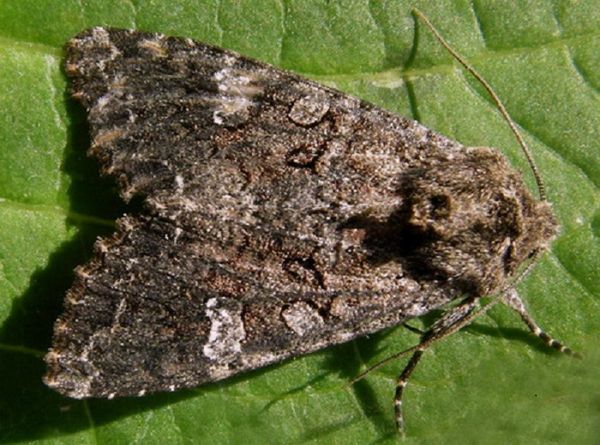
Cabbage protection against pests and diseases
Prevent the development of plant diseases and the invasion of pests can be primarily preventive measures. The basic rules for the protection of cabbage consist of the following items:
-
- seeds for planting would have to be selected in specialized stores or in nurseries;
- before sowing, planting material must undergo disinfection (by soaking in a weak solution of potassium permanganate);
- the plot for the garden is prepared in the autumn (it is thoroughly cleaned of plant residues and dug up with the simultaneous introduction of fertilizers);
- before planting, the soil must be disinfected (by watering with hot water, a solution of potassium permanganate or copper sulfate);
- timely fertilization will provide young shoots with nutrients, which will strengthen their immunity and resistance to diseases;
- the soil should be not only fertile, but also loose, so that the water does not stagnate in it (this will prevent fungal diseases);
- when signs of disease are detected, it is necessary to remove the diseased part of the plant or the entire bush, so that microorganisms do not spread throughout the bed;
- when planting and after it should observe the temperature and watering norms;
- if the culture is cultivated in a greenhouse, the surfaces of the structure should be disinfected at least 2 times a year, the soil is periodically replaced with a new fertile layer (after infection of the cabbage, the soil is completely replaced).
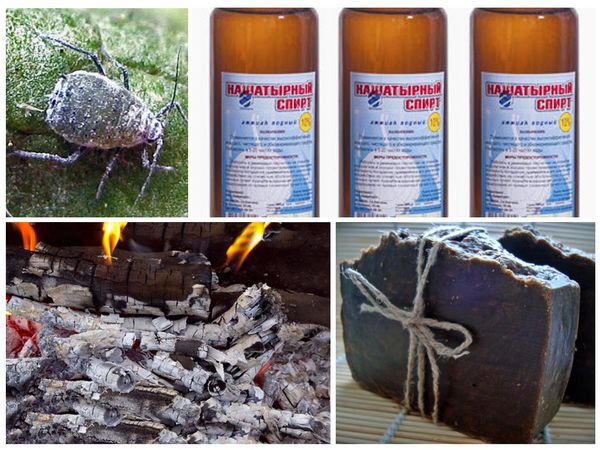
Traditional methods of pest control cabbage - The following means are used to prevent diseases:
- spraying ash solution, extract of pharmaceutical chamomile, onion peel, decoction of tomato tops, wormwood and other plants;
- dusting wood ash, crushed chalk, lime;
- treatment of beds with Bordeaux mixture, solution of colloidal sulfur, preparations with Hom, Energen, Fitoflavin, etc.
Chemicals are used only for extensive damage to plants. When choosing a tool, preference should be given to options developed on biological substances.Cabbage is an incredibly healthy and tasty vegetable. To get a good, and most importantly, a healthy harvest, it is worth spending time and effort, then in winter the body will not suffer from a deficiency of vitamins and trace elements.
